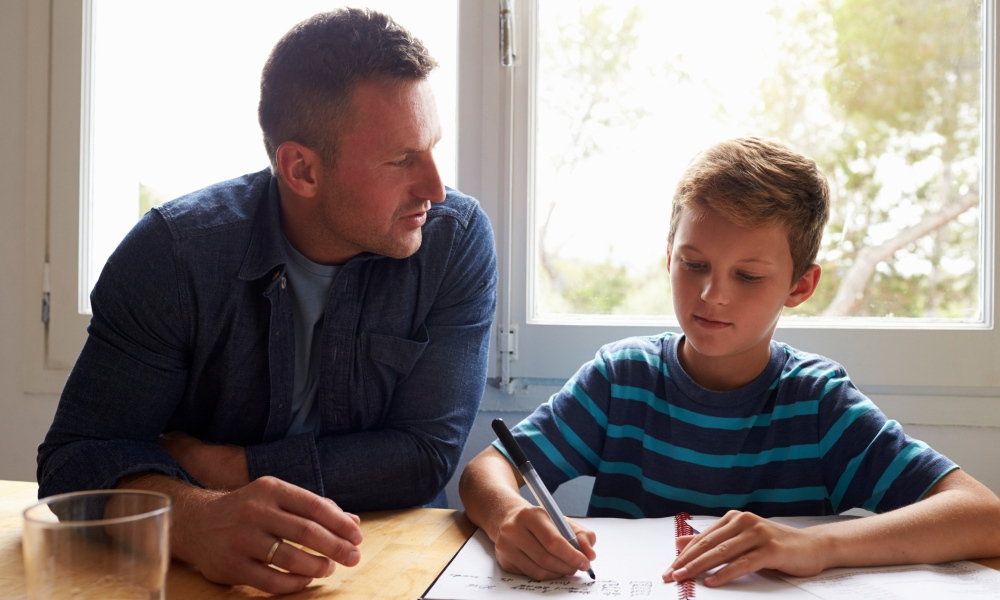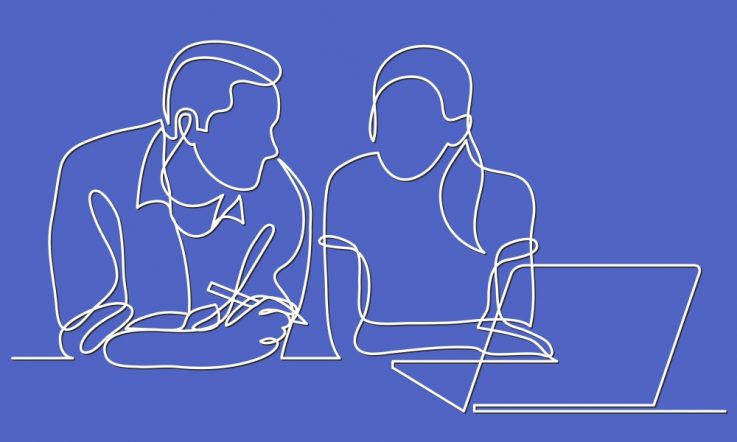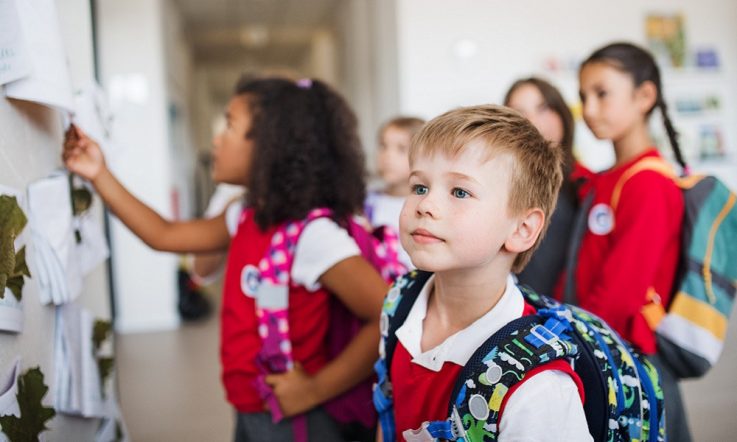This podcast from Teacher is supported by EnhanceTV. EnhanceTV streams the best curriculum-linked movies, documentaries and TV shows Australian television has to offer. Use the word ‘teacher' in the promo code at sign-up and receive an ongoing free individual account. Subscribe free at enhancetv.com.au today.
Hello, I'm Jo Earp and welcome to another Teacher podcast. With students returning to face-to-face classes here in Australia, I thought it might be a good time to take a breath and reflect on what's certainly been an intense couple of months for everyone. My guest in this episode is Professor Pauline Taylor-Guy, Director of the ACER Institute and the Centre for School and System Improvement. We'll be talking about what's happened and where to from here – continuity of teaching and learning during COVID-19, trying to understand and mitigate the impacts on student outcomes, how schools have adapted to ‘emergency remote teaching', and how the experience could lead to future changes and innovations in practice. So let's get started.
Jo Earp: Professor Pauline Taylor-Guy, welcome to Teacher magazine.
Pauline Taylor-Guy: Thank you Jo, it's a pleasure to be here.
JE: I want to start by casting our minds back. The past couple of months have been very intense, we've all been adapting to new ways of working … new ways of living! Early on, it became obvious in the education sphere that although schools, in terms of the physical space, were closed, that didn't have to mean a stop to the learning – for students, for teachers and for school leaders as well. Although, it's been challenging hasn't it?
PTG: Yes, schools have certainly had a really challenging time to ensure continuity of teaching and learning, and ensuring the wellbeing of their students. We know from the schools and education systems we work with, just how well teachers and schools have collaborated to be doing face-to-face and remote teaching during this period at the same time. And they've had to work with parents to support student learning in the best way they can with the resources that they have.
JE: And it hasn't really come to a standstill here in Australia – I know that in some countries around the world, they've had to shut down schools and there has been little happening in terms of alternative delivery (and of course there are different reasons for that depending on the circumstances in each country). In Australia then, we've managed to keep things going and, in fact, some students have thrived during this situation.
PTG: That's true, and it was never an option for learning to stop in Australia. Across the country schools have stayed open for vulnerable children, but also having students who could stay at home, stay at home. Right across the nation there has been a huge endeavour to keep everyone as connected with learning as possible.
JE: In the article that you co-authored for Teacher with ACER Institute colleague Dr Anne-Marie Chase (who is Course Coordinator for Postgraduate Courses and Online Learning) about the continuity of teaching and learning during COVID-19, you highlighted some of the things that had to be in place for schools to successfully adapt to this new way of teaching and learning. The key to that, to me, seemed to be collaboration – so, making the best use of existing resources, working together to identify expertise, making the best of what you've already got I guess, as a firm starting point. Is that right?
PTG: Absolutely, so in the situation that we had – which we're calling remote teaching, or even ‘emergency remote teaching' – schools are just having to amass and audit the resources that they have to be able to do that continuity of teaching and learning. And the only way to do that is collaboration, because we can't have individual teachers try to teach face-to-face classes and remote classes at the same time. So, it's been an opportunity for teachers and schools to think about different ways that they were going to be using their resources, including how they are going to be contacting and working with parents to be able to just continue the learning the best way that they can.
JE: Remote learning during COVID-19 then, that includes online and offline learning activities, and I want to come back to discuss that access to technology in a moment. As well as schools and educators, parents and students have responded and adapted. It hasn't been business as usual. We need to recognise the constraints of the situation and the pressure that was being put on teachers, students and parents – it wasn't about keeping to a normal timetable was it?
PTG: No it wasn't at all, and nor could it be. That's why we'd try and characterise it as ‘emergency remote teaching' because it's not business as usual. Schools have had to find ways in which they can provide resources and support to students for home learning in a way that they would never even thought that they would have to plan to do. So, it's been a very difficult situation and schools, and teachers, have managed in an amazing way. The different kinds of resources, and different kinds of ways that they have done that have been quite amazing.
JE: Absolutely, yeah. We'll come back to talk about some of those school examples later on, I know you want to highlight a couple in particular. I touched on, in the previous question, the idea of online and offline learning and access to technology. When we think about learning from home, I guess there's a tendency to just think about online learning, but I know you prefer the phrase ‘remote learning'.
PTG: Yes, because really there is a distinction. There's quite a big field of knowledge around online learning that comes from the higher education sector but it hasn't been so relevant for schools until now. And, there's a difference. Online learning is something that is carefully planned, it has a special learning environment (called a Learning Management System). The Learning Management System is kind of like an online classroom, it's specially designed to be able to scaffold and support collaboration, peer interaction, it has integrated video platforms. But it's also specially designed for asynchronous learning – learning that doesn't happen in real time, all the time. There might be some real-time learning activities but it's not about real-time learning the way that a regular classroom is.
JE: So, that's been an important difference, and there's a real mix as to how schools have approached this continuity challenge. But there is a divide there, in terms of the access to technology, and also the ICT skills of students (and teachers) and their preparedness for online learning. ACER Research Director Julian Fraillon has written about those skills and preparedness in a recent Teacher article. Sue Thomson, Deputy CEO (Research) here at ACER also highlighted in her most recent Teacher column things as simple as: Do students have a quiet place to study? Do they have access to books and resources in the home? So, there's that sort of divide there already. You co-authored a paper with ACER colleagues for the Australian Government which explores the likely impact on educational outcomes of vulnerable children learning at home during COVID-19.
PTG: I think what the situation has shown us has probably brought into sharp focus long-standing, existing inequities. And they relate to access to technology. So, we know that certain groups have poorer access to technology. Obviously that access isn't just about remote or very remote areas of Australia, it's also related to socioeconomics and the opportunity to be able to purchase hardware and software – we know about that. And, of course, it's actually not just about the hardware, or even the software, or the access – it's really, just like in a regular classroom, it's actually about the quality of the teaching and learning that happens in that space that's the most important thing.
JE: Yeah, it's interesting, I've had this discussion with a few people over the last few weeks, that good teaching is good teaching, whatever the space and the circumstance. That's been another realisation for some that ‘actually, these things work really well in the classroom too' – so, it does come down to the quality of the teaching doesn't it?
PTG: It does, and one of the things that I know that my teacher colleagues will be very familiar with now is that teaching using technology, or even good online teaching, is not the same as face-to-face teaching – it requires an enhanced skillset to be able to drive teaching and learning, and enable teaching and learning, in what is essentially a different kind of classroom. As I say, most teachers are not prepared for that because we've never had this situation before, but I think some of my colleagues and some of the education systems that I've been working with are really seeing some potential coming out of what has been a very difficult situation; some ways in which they might change and innovate on their practice in the future.
JE: Absolutely. Even so, there is a likely impact on educational outcomes – particularly for vulnerable children. What are some of those impacts that we need to be on the lookout for, and how can we respond to that as things move back into the classroom?
PTG: We know that some students who've had poor access, or students who are at risk of disengaging are probably likely to be more impacted by this situation than others who have, as you've said Jo, better resources at home, better able to have parental support at home. So we know that they're going to be likely more impacted by that.
I guess a key message to teachers and schools is – they know their students, they've been connecting with their students the best way that they can do, they have a lot of information around the students. And so it's going to be really important as they're coming back to school is to be able to identify their starting points for learning, and to pick up on those and plan appropriately for those. We're imagining that there will be a differential impact, depending on geography and a whole range of things, on children, but teachers are very good at being able to pinpoint starting points for learning and planning for that.
JE: Is there a small proportion of students who may have fallen off the radar altogether, that maybe won't have been in contact at all during this period (and we're talking about maybe a couple of months)?
PTG: Undoubtedly, and there has been some literature come out around the risk factors about students who are already at risk of disengaging from school. But what we also know is that schools track that information quite carefully. So, we're not sure, because we don't have the information yet, but we are looking to understand the situation better about the impacts for different students.
Some schools have tried to be thinking about, for their classes in remote teaching and using technology, taking a roll at the beginning of a class, like they would do face-to-face. But they found that hasn't been terribly effective. So, you know, schools where they have [at risk] students enrolled they will be able to capture quite easily those students who've not been engaged in the learning and why they haven't. And I'm sure that schools will have those systems in place to be able to follow through with students who may already have been at risk of disengaging.
JE: I'm speaking with Professor Pauline Taylor-Guy about how schools have adapted to the challenge of ‘emergency remote teaching' during COVID-19. We'll be back after this quick message from our sponsor.
You're listening to a podcast from Teacher magazine, supported by EnhanceTV. Invite the world's leading educational storytellers into your classroom. EnhanceTV streams the best curriculum-linked movies, documentaries and TV shows Australian television has to offer. As a non-profit service our platform offers an affordable teachers-only school plan, a favourite for primary schools. Take a free 60-day trial with a choice of two school plans at enhancetv.com.au. Click on ‘subscribe' for full details.
JE: Pauline Taylor-Guy, you were part of an expert group assembled by Australia's Chief Scientist, Dr Alan Finkel, to provide advice to the Federal Government about learning outcomes for online versus in-class education. What were some of the findings from that research analysis?
PTG: That was very interesting, being part of that Rapid Research Information Forum, because really the situation hasn't occurred before and people are looking for sources of evidence that [could be related] to the current situation. The only way we're really going to know the impacts is to investigate the impacts – the ‘hows' and ‘whys' of all of that. And there was quite a lot of interest in situations such as the online Charter Schools in the USA, but that situation is not really relevant to the Australian situation. There's been some research done in New Zealand post the earthquakes that may have some relevance to us in Australia, in that, overall, there wasn't a massive negative impact on student outcomes. But, again, there was a probably greater impact on more vulnerable children.
So we don't really know, and we don't really know which parts of this evidence that we have from different contexts will be relevant for us in Australia. But we're looking at really trying to understand what's going on here, and what the differential impacts have been, and which kinds of strategies that schools have been using that have actually mitigated those effects.
JE: Absolutely. I want to switch the focus to the educators and some of the strategies they've been using to good effect. Reflecting on what's happened – what's working, what isn't working – that's an important part of the process anyway, so does there need to be a structured approach to thinking about the impact of different ways of working during these times, and how to build on those?
PTG: I think it would be useful if schools did do that, but we are working with some education systems who are already thinking about that. So, already seeing that although this has been a very difficult situation, there are great benefits in it. For example, the possibility of schools networking with each other to offer particular subjects for example, and understanding that a school day doesn't necessarily have to be from 9am-3pm, that you could have some flexibility in the school day. So these are all things that teachers and we know schools are kind of considering.
There was a lovely example from one of the systems we're working with where they're saying: ‘Well, we've turned off all of these things. Which things are we going to turn on now and why?' That's part of system reflection as well as school reflection – things that have worked really well. I certainly think that some of the collaboration that's happened within schools and across schools has been really beneficial, and people are already thinking about ways in which they could use the learning that they've had in recent, turbulent weeks to be able to plan for their students better, and have better infrastructure, maybe, and better skills in their teachers to be able to offer a curriculum more flexibly.
What we've seen with different schools is adapting as they go with their strategies. So, going from taking a roll every day, having students sitting in front of a computer for most of the day (which is really not great practice, not sustainable and very exhausting for students and for teachers) to thinking about: ‘What is it that we really need to concentrate on?'; ‘How are we going to chunk up learning so that there are opportunities, particularly for older students, to be able to do independent learning?'; to have timetables where they can go and do physical activities, and various different activities. So, we've seen schools adapt as they go and really try and focus on the important things. Having catch-up sessions, for example, rather than timetabled classes – so, a kind of Q&A idea.
So we've seen that happen. And then we know that in the emergency part of this situation – what we would call ‘Phase 1' of remote teaching – the real importance to be keeping connected with students, keeping socially connected with students. So we'd say, you know, Maslow's [Hierarchy of Needs] before Bloom's [Taxonomy]. Really trying to do that, and I've noticed some fabulous, just fabulous examples of that. Particularly in schools where they have maybe a large proportion of students from low socioeconomic backgrounds or from different language backgrounds – I've seen some wonderful examples.
One school, close to my home in Cairns, is Cairns West State School who already use their Facebook page to do a whole range of community interaction activities but having different activities taught by the teachers on little videos on Facebook every day and communicating those in different languages, having some exercises and challenges for those primary-aged students has just been an absolute joy to see.
JE: That's a great one – I've had a look at the Facebook page and loved those teacher-led activities: there are some keep fit exercises there, story time, there's a science experiment to make a volcano, there was a stargazing activity in there … brilliant stuff. In your role here at ACER you work very closely with schools across the country and across all sectors, and they all have differing contexts, different staff and student needs. What are some of the examples of good practice you've seen during the COVID-19 restrictions? How have leaders and teachers risen to the challenge of this new environment?
PTG: I don't know this school personally, but I've been reading about a school in Melbourne, Sacred Heart Primary School in inner Melbourne, in Fitzroy, where most of the students there don't speak English as a first language and don't own their own computer. But, that school have done amazing things in being able to try and connect the children to their learning, using technology, giving them hardware and software, and access, and running very interactive, live sessions for language learners (very, very important), flexibility of the timetable, using the school space in very COVID-safe ways to be able to bring a parent and a student into the school if they needed to do that. So, I've seen wonderful examples there.
Even in schools who might have been very wedded to a very traditional curriculum and traditional curriculum delivery are now talking about ways in which they can put more flexibility into their curriculum. Because, I think schools realise that there are occasions where groups of students would need that flexibility, regardless of whether there was pandemic or not, and how they could really adapt their teaching – that notion of a flipped classroom has really started to get some appeal in schools that may not have considered it before.
JE: Yes, that's been a really interesting knock-on effect. You mentioned flipped learning there – of course, some of the strategies that we're using now are based around use of technology, and others are strategies that don't use technology that we already know are very effective. Can you take us through some of those?
PTG: Yes … and this is kind of an opportunity to perhaps put some focus on those as well. We know, for example, that the simple act of putting books in homes – not just learning resources that teachers have put together but books for young children – has a positive impact over their whole academic trajectory. So there are things that we could think about in this space that we can easily do which would make a difference to children in the long term.
The other thing is there are programs such as Families as First Teachers which is a kind of signature program that is used in the Northern Territory, which is based on the Abecedarian Approach. [It's] where educators work with families as the first teachers of children and address intergenerational educational disadvantage in that way, and we know that they work really well.
So we have some good evidence around what could work with families and what can work to support parents. And I really hope this is something that schools are seeing – that as parents have been involved in their children's home learning, ways in which they can capitalise on that well into the future.
That's all for today, but if you'd like to keep listening there are more than 150 podcasts in the Teacher archive, including our latest Research Files episode featuring Professor Pasi Sahlberg. You'll find us by searching ‘Teacher ACER' wherever you get your podcasts. And while you're there, make sure to subscribe to the channel. It ensures that new podcasts land in your feed as soon as they're available.
You've been listening to a podcast from Teacher, supported by EnhanceTV. Subscribe to one of our new school plans, or free as an individual using ‘teacher' as the promo code. We're non-profit, we're for teachers and filmmakers. enhancetv.com.au
As a school leader or teacher, what are some of the learnings about staff collaboration, parent participation and curriculum delivery that you’ll take from recent weeks?
Pauline Taylor-Guy spoke about the benefit of system reflection and school reflection and recalled the following comment from a discussion: ‘We’ve turned off all of these things. Which things are we going to turn on now and why?’ Thinking about your own school context and experience, how would you respond to that question?



